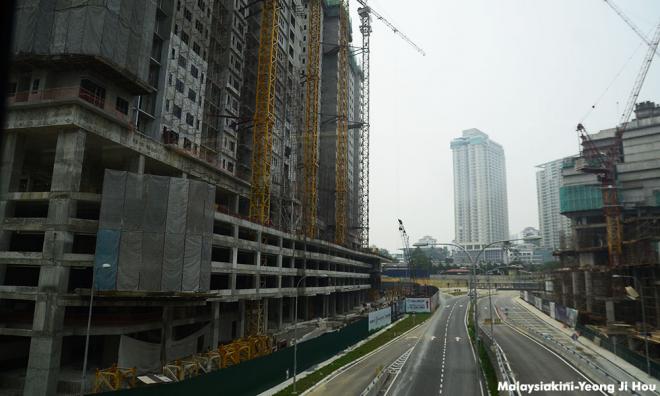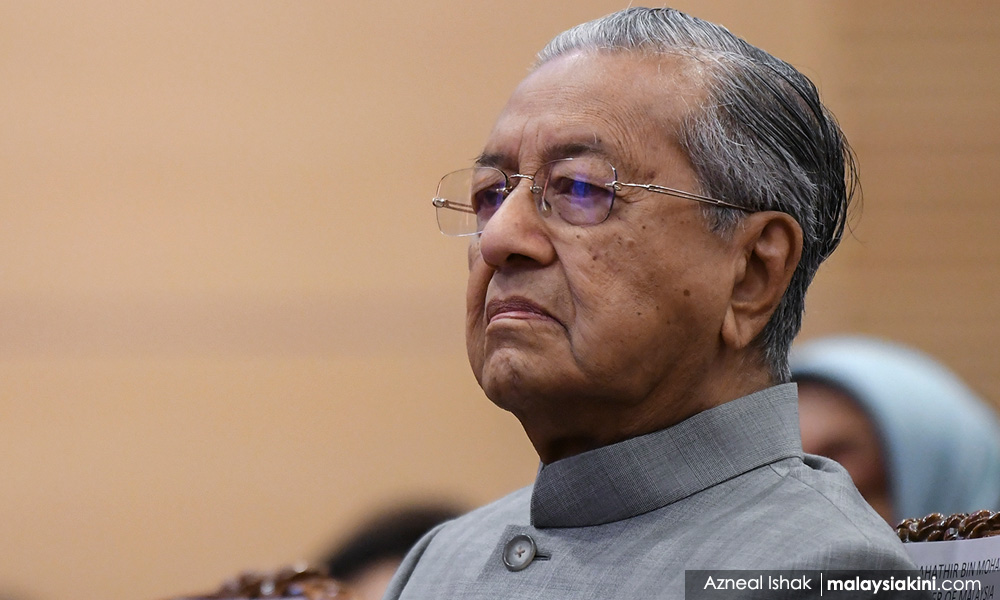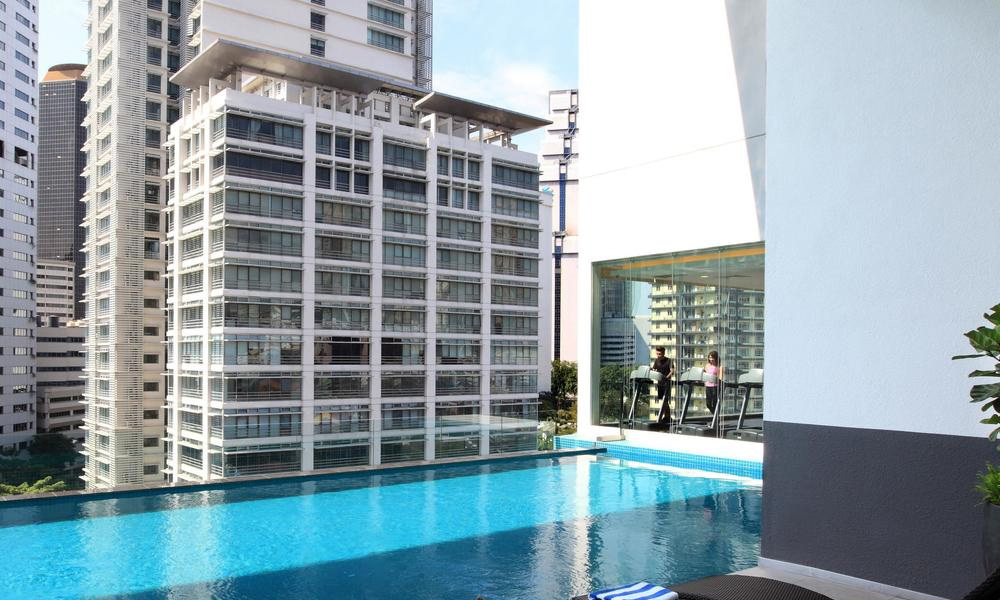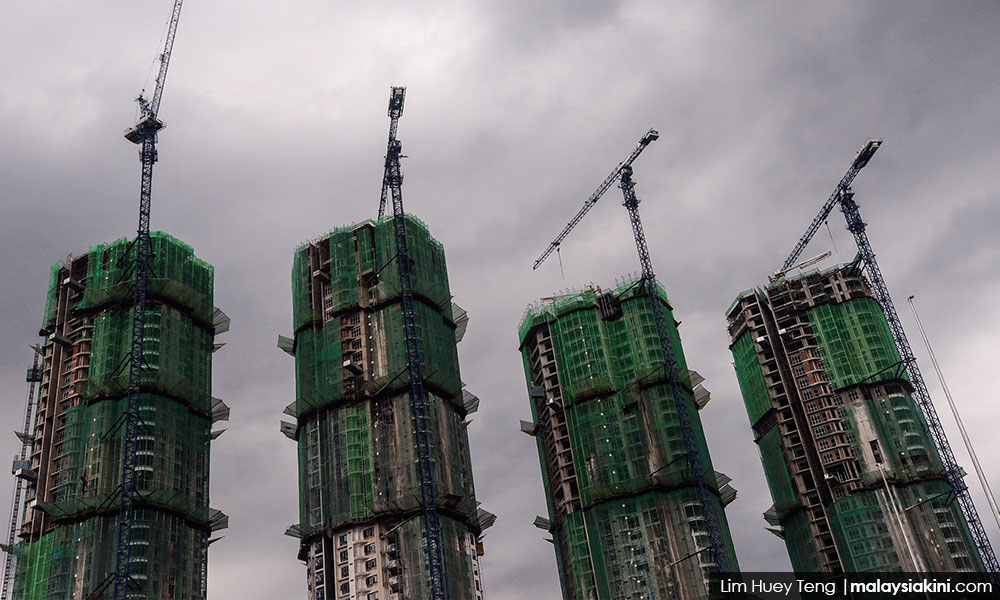
KINIGUIDE | Pakatan Harapan’s proposal to lower the threshold for foreign nationals to own high-rise homes to RM600,000 has surfaced as one of the most unpopular Budget 2020 initiatives.
Mentioned along with a host of home-ownership schemes aimed at locals, it has, however, become a focal point for criticism and conjecture.
Is it a bad policy or a misunderstood one?
This Kiniguide will lay out what exactly has been announced and line the policy up against the serious supply overhang problems facing the Malaysian housing market.
What is the policy?
From Jan 1 to Dec 31, 2020, foreign nationals will be able to purchase unsold completed condominiums and apartments located in urban areas that are priced at RM600,000 and above.
This is a relaxation of the present RM1 million threshold for foreign nationals to own property.

The policy is expected to take effect in the three federal territories (Kuala Lumpur, Putrajaya and Labuan) as they fall under the federal government.
However, it is up to state governments to decide if they will implement the new threshold in their respective jurisdictions, as land matters are within their purview.
Any other details?
In view of the budget announcement, the Selangor and Penang governments have begun reviewing their foreign property ownership thresholds.
However, leaders from both states have opined that the RM600,000 threshold is too low.
As with other budget announcements, policy details - like the exact “urban areas” and property types included - are set to be unveiled in due time.
Prior to the Budget 2020 announcement, the Johor government, too, said it was mulling bringing down the threshold for foreign property ownership in the state from RM1 million to RM600,000.
In the original Budget 2020 speech, which Finance Minister Lim Guan Eng delivered in Malay, the policy appears to concern “kondominium dan pangsapuri” (condominiums and apartments) only.
However, the English translation of his speech appears more general and reads “high-rise property”.
What is the rationale for this policy?
The aim is to reduce the supply overhang of condominiums and apartments in the country, Lim noted in his speech.

By the second quarter of 2019, some RM8.3 billion worth of completed condominiums and apartments were unsold.
The minister later clarified that the policy would only apply to existing (completed) units which have remained unsold. It will not affect projects which have not been launched.
Malaysians would not be obstructed from purchasing the same properties and were thus not affected.
Lim believed that this lowered threshold would benefit the property sector and that sales would, in turn, have a “direct spillover effect” on the economy.
Why is the government helping developers clear their stock?
Prime Minister Dr Mahathir Mohamad said this is to prevent developers from “getting into trouble” and to avert a “national crisis”.

“We have to sell them or developers will get into trouble. And overhang in property will result in a national crisis, which has happened in Hong Kong and Tokyo due to overdevelopment.
“We have to get rid of this overhang so that the market for property becomes healthy again,” Mahathir said.
Although not explicitly said by the premier, it is inferred that if the highly leveraged developers get into trouble, it will have a ripple effect on the rest of the economy.
The property and construction sector also has linkages to some 120 other sectors and employs more than a million people, according to the Construction Industry Development Board.
However, this estimation does not take into account employees of manufacturers which supply materials to the construction and property development.
Such employees could range from brick and steel pipe makers to manufacturers or distributors of white goods and furniture.
How bad is this supply overhang problem?
Bank Negara Malaysia has been warning of an excess of unaffordable residential properties every year since 2017. This oversupply is made worse by a shortage of affordable homes, causing a supply-demand mismatch.
Among factors for this, it said, was that more and more developers were entering the property market to sell condominiums, and unit prices were rising far quicker than the rate of income growth.
Despite these warnings, the number of unsold residential units has continued to rise.
According to data from the Finance Ministry’s National Property Information Centre (Napic), the total number of unsold residential properties in 2017 across all categories was 24,738 units worth RM15.64 billion.
As of the second quarter of 2019, there were 32,810 units of unsold residential properties worth RM19.76 billion in total.

Of this number, condominiums and apartments made up the biggest chunk, both in terms of the number of unsold units (14,021) and value (RM8.28 billion).
This constitutes 42.7 percent of the total number and 41.9 percent of the total value of all unsold units.
On the bright side, although the number of unsold units is on an upward trend, the growth is moderating. Compared to the second half of last year, the number of unsold residential properties grew by only 1.5 percent - or about 500 units in the first half of 2019.
This is a much smaller growth compared to the same period the year before, when the number of unsold units grew by about 18 percent.
Where is this residential supply overhang most severe?
Napic data shows that most unsold residential properties are located in Johor. In the second quarter of this year, close to a fifth of unsold residential properties in Malaysia were located in Johor. This is 6,195 completed units unsold.
Perak came in second, with 17.6 percent (5,796 units) of residential properties unsold.
Selangor was third with 8.5 percent (1,543 units) of residential properties unsold.
Interestingly, for condominiums and apartments, the most overhang at the national level is for properties priced between RM200,000 to RM300,000.
These comprised 3,771 units in the second quarter of 2019.
The number of unsold condominiums and apartment units priced below RM600,000 is more than twice the number of pricier units.
However, in terms of value, properties priced above RM600,000 were valued at RM1 billion-plus more.
As such, the overhang may be of more concern in the high-end category due to the property values.
With the threshold lowered to RM600,000, what will be available to foreign buyers?
With no clear definition of what “urban areas” means yet, it is hard to provide an accurate number.
This Kiniguide will be updated when more information is available, but to have an idea of the quantum, we can look at the number of unsold properties for the second quarter of 2019.
According to Napic data, some 2,508 unsold condominium units were priced from RM600,001 to RM1 million. Assuming they are all located in “urban areas”, this would be the extra number of properties now accessible to foreign buyers.
This is 75 percent more than when the threshold was set at RM1 million.
Will the economy tank if developers fail to sell luxury condos?
Despite Dr Mahathir's fear of crisis, his economic advisor Muhammad Abdul Khalid said the government intervention is not required because the market can correct itself.
He said the glut in high-end properties is due to a mismatch between supply and demand, given Malaysians’ relatively low income.

“We are a market economy, so allow the market to adjust […] which means the only rational thing for developers to do is to lower their prices.
“There is no need for the government to intervene in clearing all these high-end properties,” he said, when speaking in his personal capacity at a forum on Budget 2020.
Property analysts believe it is unlikely that developers will reduce prices because margins are already strained.
That said, following the slowdown in property purchases, developers have found creative ways to attract buyers, including providing rebates reaching 11 percent and no-interest differential loans of up to 30 percent.
Some argue that the policy hurts local homebuyers. Why?
The Homeowners Buyers’ Association (HBA) said that rather than making developers lower prices and build affordable housing, lowering the threshold will “encourage” developers to continue building higher-end properties with the aim of selling them to foreign buyers.
It also predicted that property owners in the secondary market will re-price their current units above RM600,000 to attract foreign buyers, resulting in a rapid increase in property prices. (It is still unclear if secondary market condominiums will be affected by the new policy.)
The policy would cause an influx of foreign buyers and effectively squeeze locals out of the housing market, it said.
HBA maintained that the oversupply of luxury residential properties was the fault of greedy developers who wanted to build high-end properties despite a lack of demand.

Similarly, the Federation of Malaysian Consumer Associations (Fomca) said the lowered threshold would result in local consumers being “neglected” as it predicted developers will now market their offerings to wealthy foreign nationals.
Opposition politicians from Umno and MCA have criticised Harapan over the policy, accusing it of wanting to “auction off” the country rather than helping Malaysians own homes.
Zooming out, the supply overhang problem extends beyond the residential sector to the commercial sector, where the number of unsold units has been increasing over the past four years.
Napic pegs the total unsold commercial properties - including shops, serviced apartments, and small offices or home offices (Soho) - at 20,022 units worth RM15.39 billion as of the first quarter of 2019.
Is anyone a fan of the policy?
Yes, the Real Estate and Housing Developers’ Association (Rehda).
Rehda believes the lowered threshold will help developers clear unsold stock and alleviate the supply overhang.
It also dismissed concerns that the policy would result in reactionary rises in property prices as these were usually determined before launching a project.
Rehda further downplayed the impact, saying that foreign buyers make up a very small part of the property market.
A previous survey by the association found that only three percent of residential property buyers in the first half of 2019 were from overseas.= Mkini



No comments:
Post a Comment
Note: Only a member of this blog may post a comment.